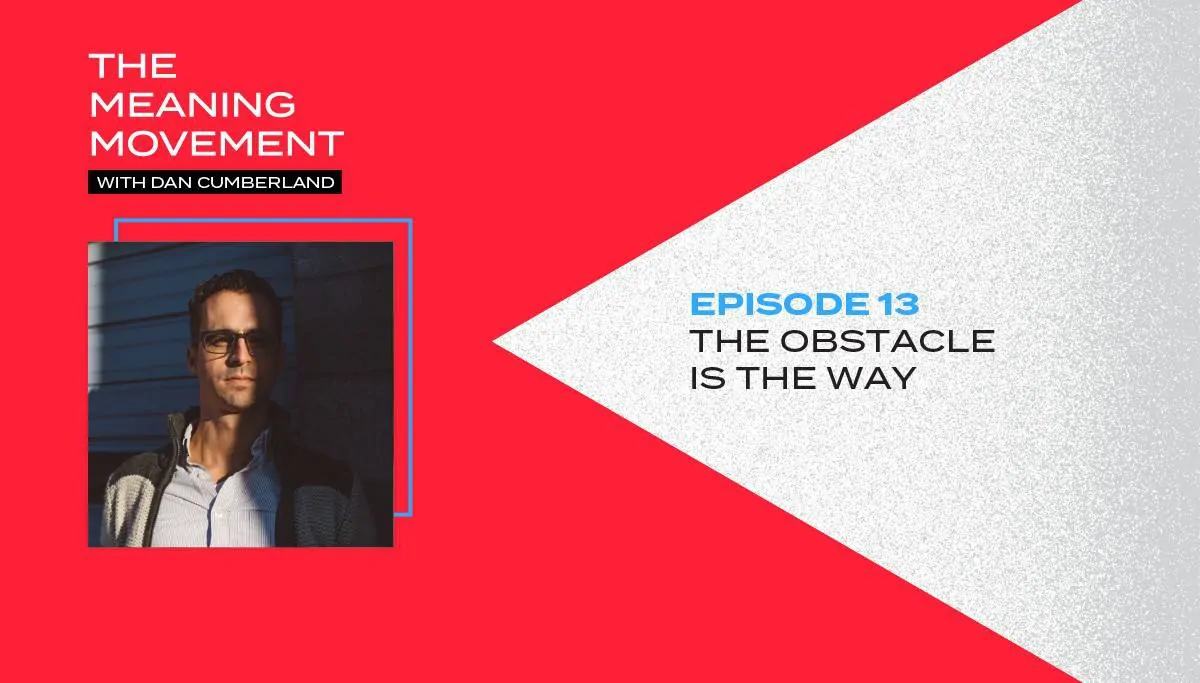In story form, the main character or hero wants something and embarks on a quest to achieve it. That quest is riddled with challenges and obstacles, which is what makes the story fun and entertaining.
But in our lives and careers, we tend to think of obstacles differently. Host, Dan Cumberland invites you to reframe everything you thought you knew about failure, obstacles, and hope.
Subscribe: iTunes | Google Play | Stitcher | Overcast
Resources
Dan’s new book, The Calling Process (it’s free right now!)
Robert McKee’s amazing book about fiction writing: Story: Substance, Structure, Style, and the Principles of Screen Writing.
Joseph Campbell’s Hero with a Thousand Faces
Ryan Holiday’s Obstacle is the Way (which inspired the title to this episode, and some of the ideas within it)
Transcript
We need to talk about obstacles, failure, and hope
I’ve been sharing about story form and the Hero’s Journey and how it informs our process of finding meaning and purpose in work. You can go back and listen to the other solo shows I’ve released (they’re all labeled “Short”).
Once the story begins. Once the call has been accepted. Once the inciting incident has taken away the hero’s sense of life as normal, the adventure begins.
The hero now has a quest. She’s leaving life as she knows it to challenge some force and fix whatever wrong has occurred.
The inciting incident that begins the story, moves the hero forward to the end. She won’t stop— she can’t stop — until the problem has been solved.
In an action or adventure story this movement is easy to trace. There’s a villain, or arch-nemesis that must be challenged. The bad guy opposes what the hero stands for. And you know from the start of the movie that it will end with the hero and villain battling it out.
In a drama, it’s more subtle. The villain may be an idea or an injustice that needs to be set right.
This brings me to you and your work. What is your work about? What are you working for and against? What can you tell me about the villain you’re battling? What is the problem that you’re trying to fix?
Sometime before we’re even sure what work is calling to us, we have a sense of what we are against.
What are you fighting for and what are you fighting against?
As the hero sets out to challenge the villain, to compete in his or her quest, the next event is important: she fails. She hits a roadblock. She finds an obstacle. Her way forward is blocked.
This is called a turn in a story.
What we thought would happen doesn’t happen. What we thought was simple becomes more complex.
This is what keeps the audience engaged in the story. We have a hero who wants something, and now she has to overcome an obstacle to get it.
Can you imagine a story without turns? Without obstacles?
It wouldn’t be a story. Or at least it would be a VERY short story. You’d have a hero. She’d want something. And then she’d get it. The end.
That’s not interesting.
What’s interesting is when she gets stuck. When her road is blocked. When the odds are against her. When she feels overwhelmed.
What makes a story interesting is when the hero’s efforts are met with failure. When she gets stuck and we don’t know how she’ll escape.
This keeps the audience engaged. This puts us on the edge of our seats. We have to know: how will she make it out? How will she defeat the evil she’s fighting against?!?
It’s entertaining to watch. But when it happens to you, it doesn’t feel so good.
Turns are painful. But if your work, your life, your career is telling a story, you’re going to find them.
This is when you get that lucky break, but that lucky break turns out to put you working at company with a controlling and selfish boss.
This is when you create something that you really believe in, but you can’t get enough people to pay attention to it.
You start a new business, but then it fails.
You get promoted, then loose your job.
You change careers, but the new one doesn’t fit any better than the last one.
And on and on.
The obstacles and failures that we encounter are what make the story good. Even though, in the moment. They are painful.
The hero has two choices when an obstacles arrises: quit or find a way through it.
A story with no obstacles isn’t a story.
And neither is a story where the hero quits.
The obstacles are the way. Though we hope for a smooth path. Though we want everything to come together, it won’t. And that is what makes it good. That is what makes it worth while. That’s what makes a calling worth chasing.
Which brings us to hope.
Every obstacles tests your belief in what you’re pursuing. It asks the question: what do you hope for?
And hope is painful. To have hope is to believe deeply that something could be that is not yet. And to believe in the possibility is to risk that it will never come about. That’s a painful, discouraging and disappointing experience.
The greater the hope, the greater the risk. The greater the risk the greater the potential for failure.
When an obstacles arrises you have the same two choices: quit or find a way. Figure it out.
What to do:
1) Obstacles are necessary. The next time your way is blocked by an obstacle— however big or horrible it is— know that it’s part of the process. It will not kill you, though it may be difficult and is not ideal. It is surmountable, with time, effort and creativity.
2) You have a choice in how to respond. You can use creativity, persistence, ingenuity to find a way beyond it.
3) Instead of avoiding obstacles, teach yourself to accept the obstacles as your way forward. They do not tell you that you are on the wrong path, like the hero on her journey to defeat the villain — the obstacle is the path.
May your work tell a courageous story. May you embrace the obstacles that come, and may you find the way through them. Remember, every challenge is an opportunity for growth, and each setback is merely a stepping stone toward your ultimate success. As you navigate this journey, know that you are so brave insights will emerge that can illuminate the paths of others who may follow in your footsteps. Keep pushing forward, for your resilience has the power to inspire those around you.
This is the Meaning Movement. I’m Dan Cumberland. Thanks for listening.


